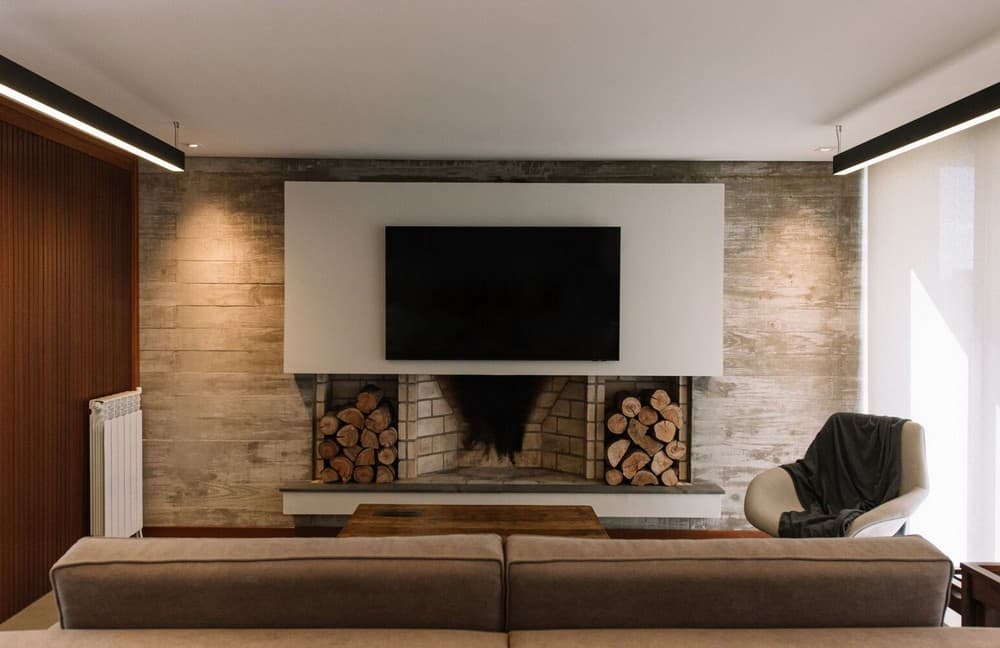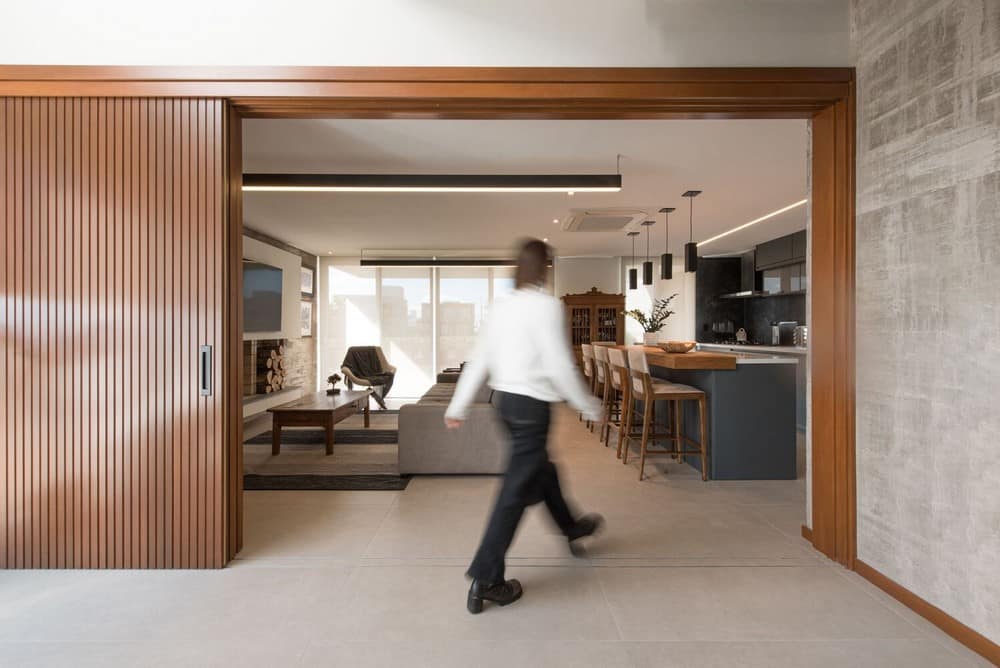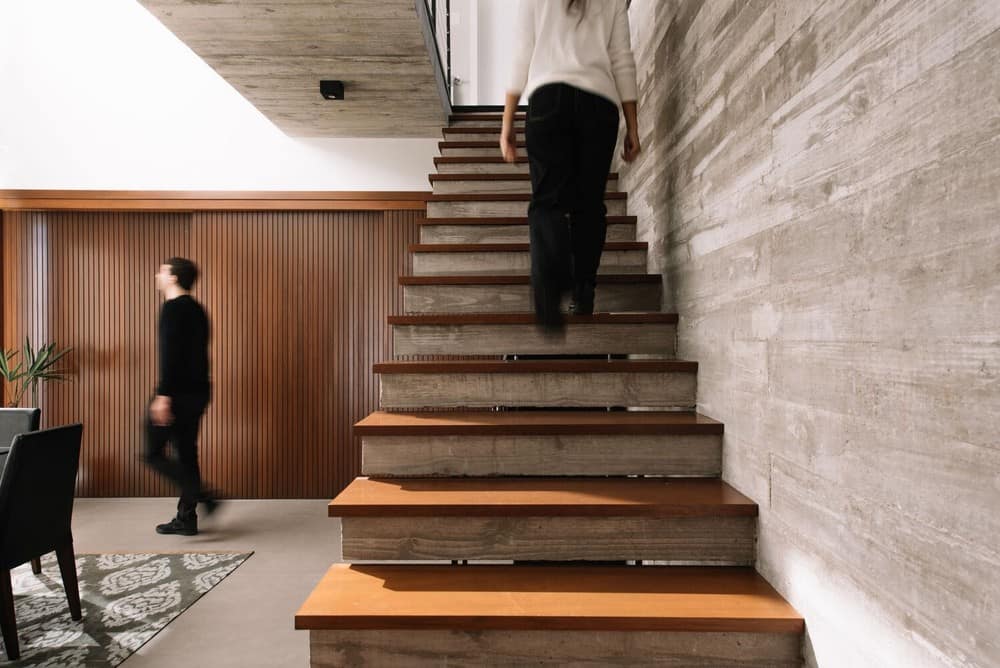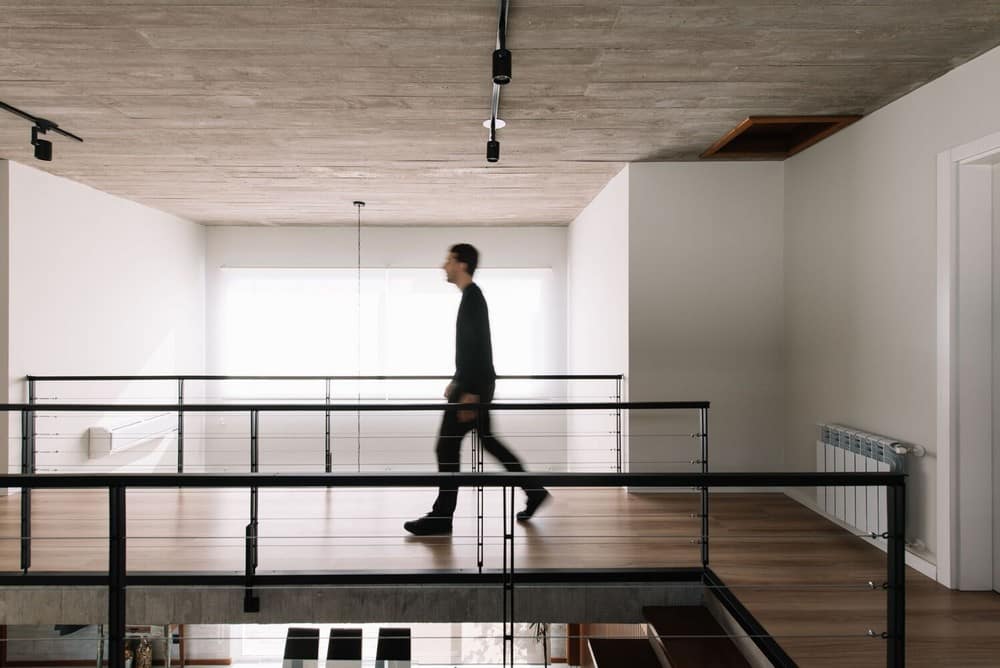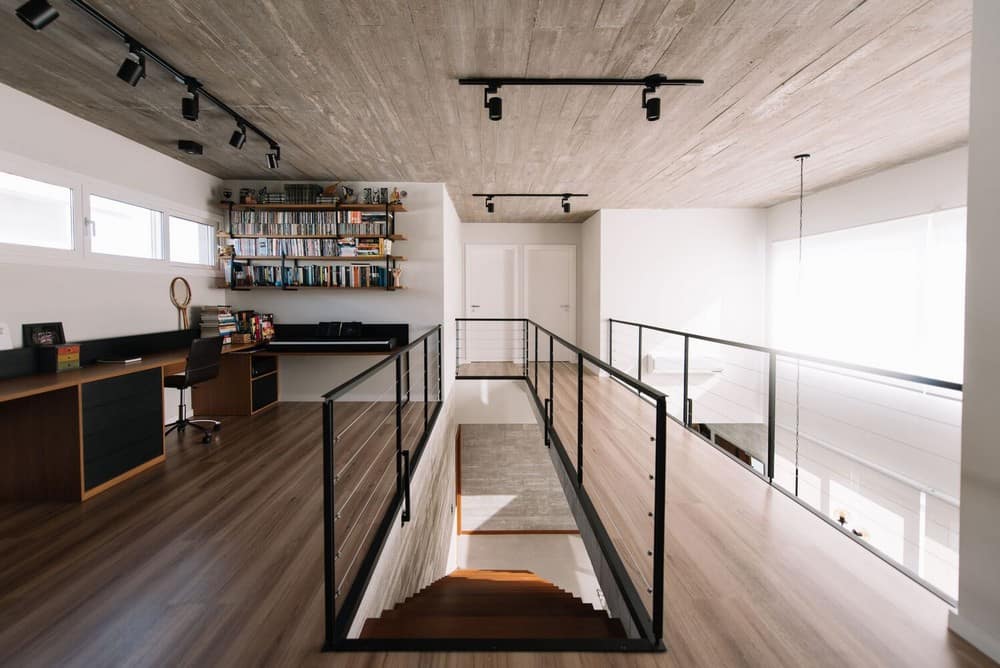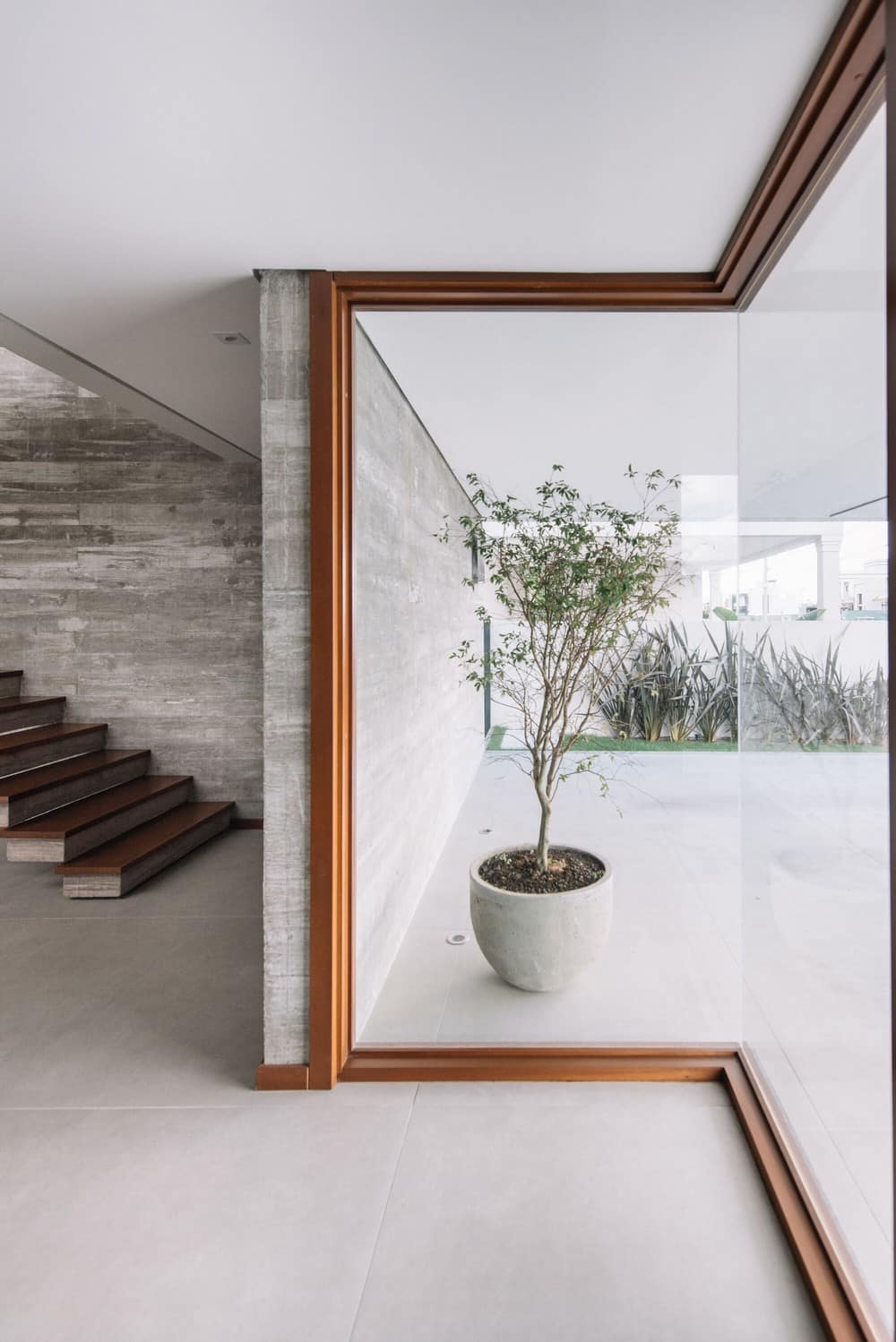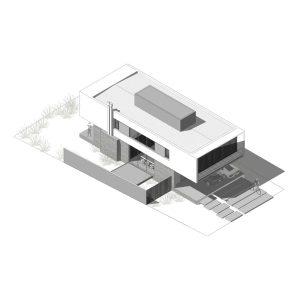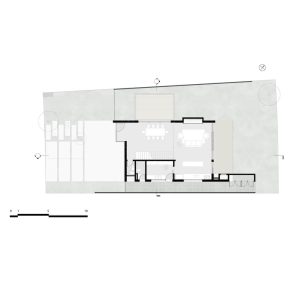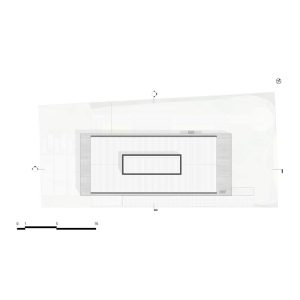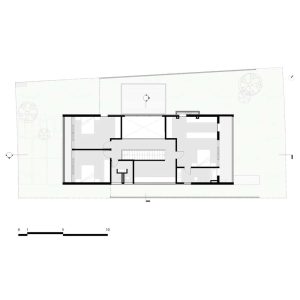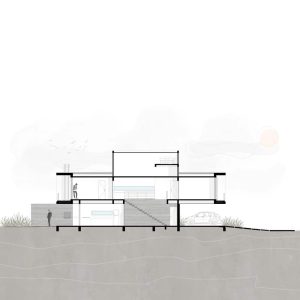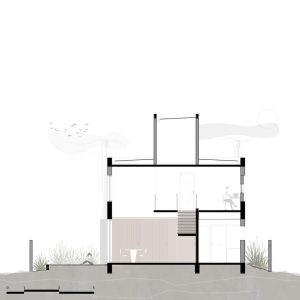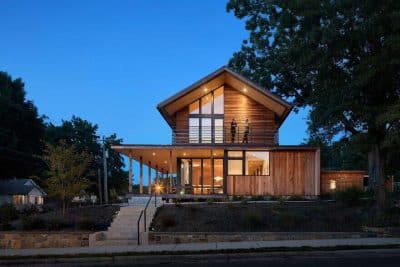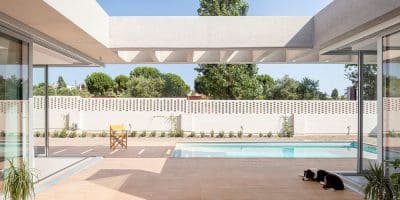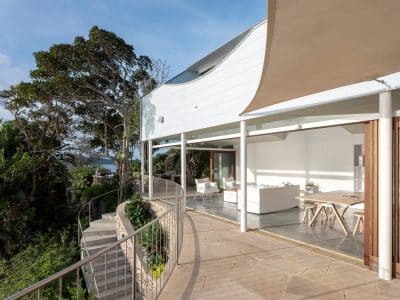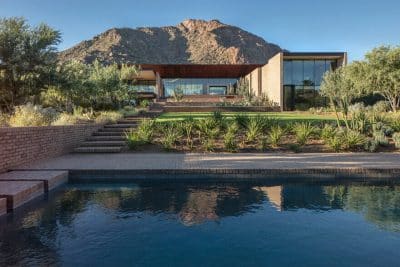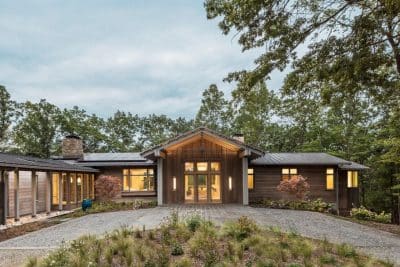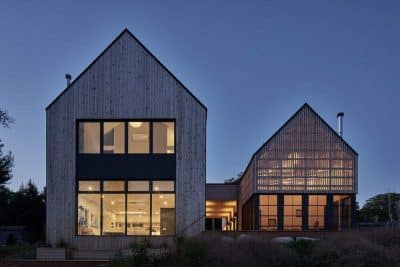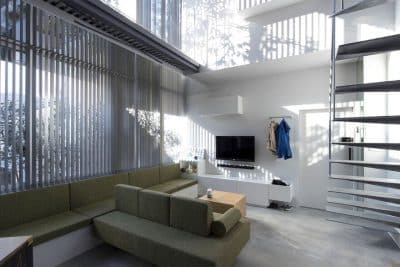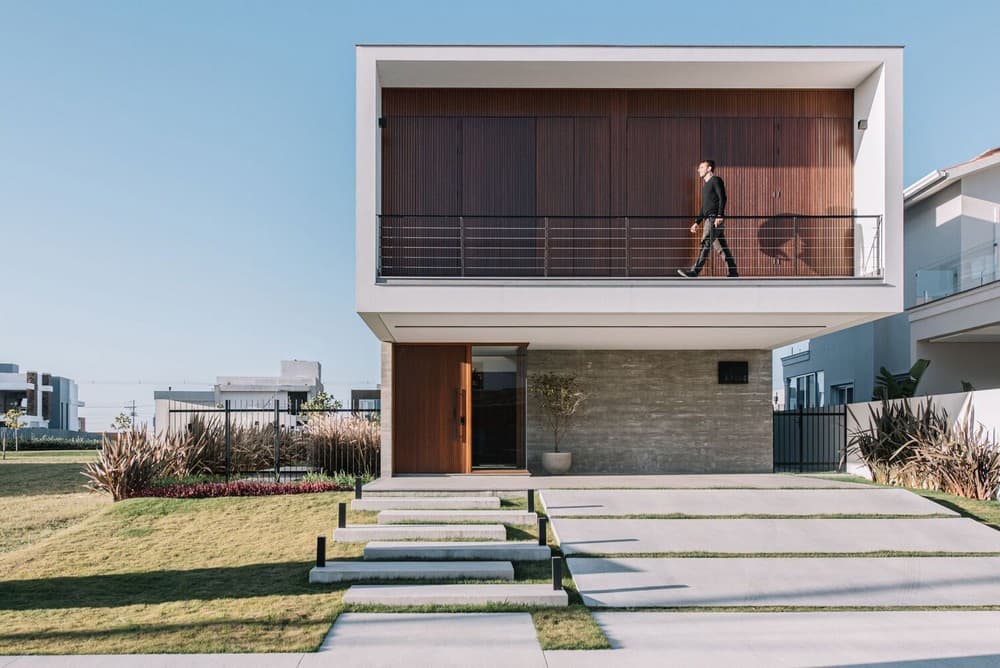
Project: CM House
Architects: Parte Arquitetura
Lead Architect: Eduardo Riemke
Architectural Project Co Author: Alice Moraes
Foundations: Gigante e Simch
Structural Project: Rodrigo Riemke
Builder: N.M. Peters
Location: Pelotas, Brazil
Area: 3154 ft²
Year: 2019
Photo credits: Lucas Daneris
The CM house is located on an urban site in the city of Pelotas, southern Brasil, with a surface area of 420m². The project consists of a linear and compact composition, inside lot’s boundary, carefully placed on the land favoring the solar orientation, close to the southeastern boundary. The volume is marked by a white rectangular prism that rests on top of a concrete volume and is projected in a cantilever, at the front, and at the back.

On the ground floor, the different areas are divided into two lanes: the first one with the social areas; the living room, and dining area, and the second one with the wet areas. The living room is connected to the kitchen and porch and is separated from the rest of the rooms through slatted movable wood panels, to facilitate acclimatization from the most extreme periods of summer and winter. The dining room’s double-height ceiling integrates the two levels and turns the second floor into a walkway.
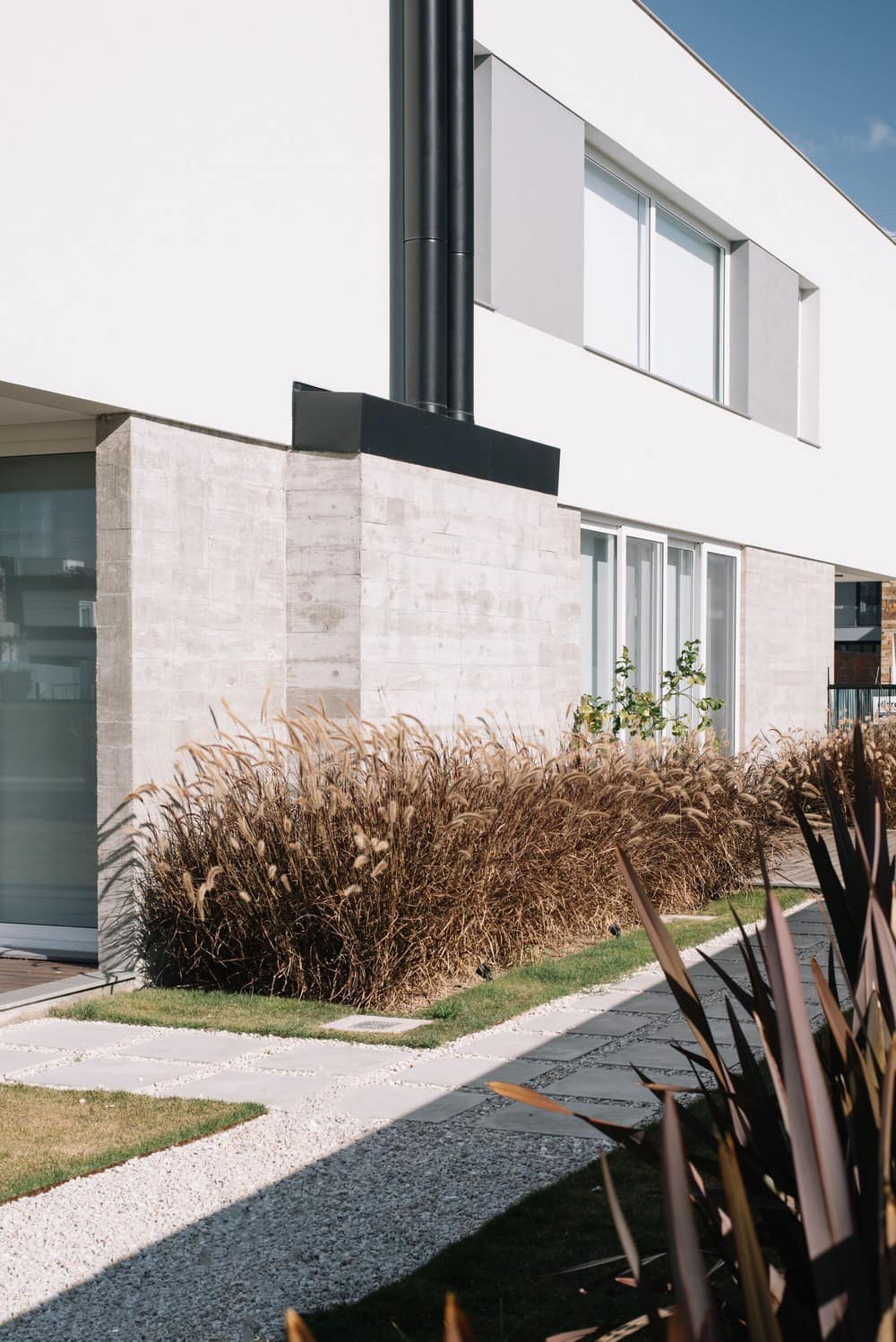
The staircase is longitudinally centralized on the plan, which imposes the transverse arrangement of the rooms on the second floor: the master suite faces towards the back, overlooking the lake, and two other bedrooms face the front of the lot, all connected to balconies that, in addition to providing greater openings for lighting and ventilation purposes, they also protect the windows and doors and form porches on the ground floor.

The use of an independent structure of reinforced concrete as a construction technique makes it possible for a formal arrangement and influences the house materials: overhangs of up to 5 meters disconnect the prismatic volume of the second floor from the ground floor, with the second floor’s front and back facades subtracted, and on the ground floor, the necessary supports are intentionally prominent figures forming planar facades with the use of apparent concrete and alternating with glass elements.
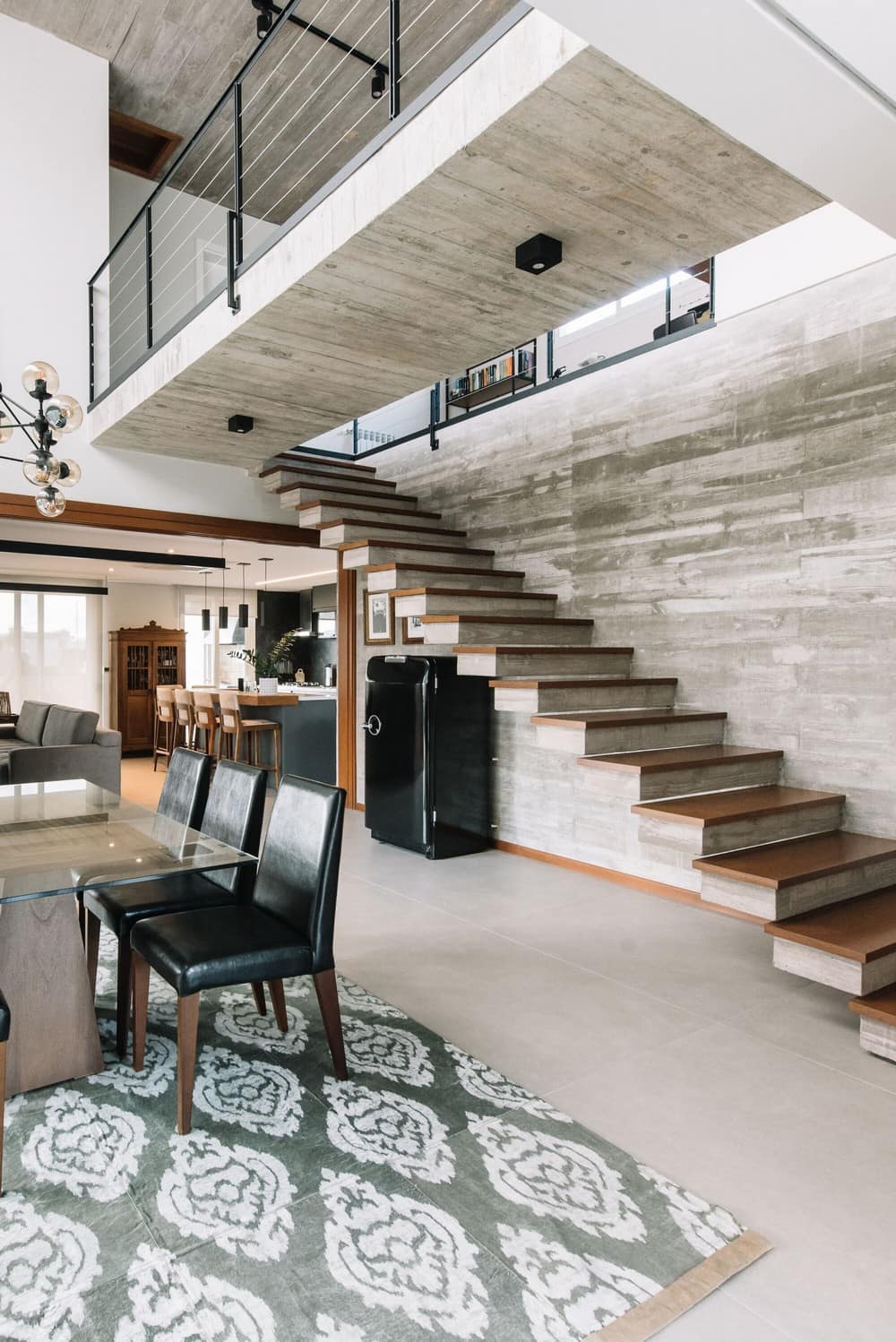
This combination of opaque and transparent textures and volumes composes the different environments and controls the privacy of the interior areas as well as the external, striving for the maximum amount of natural lighting and ventilation.
